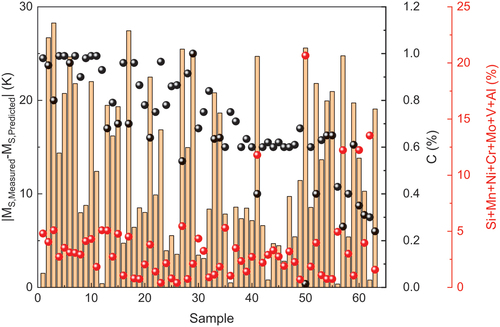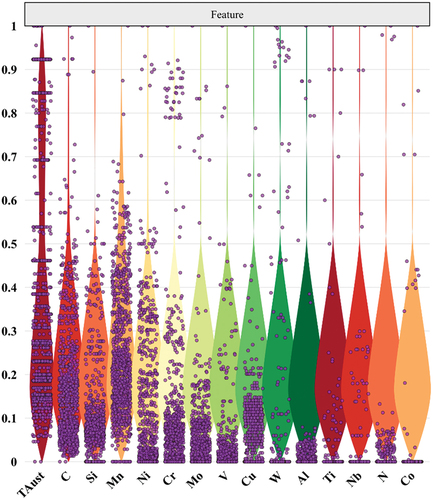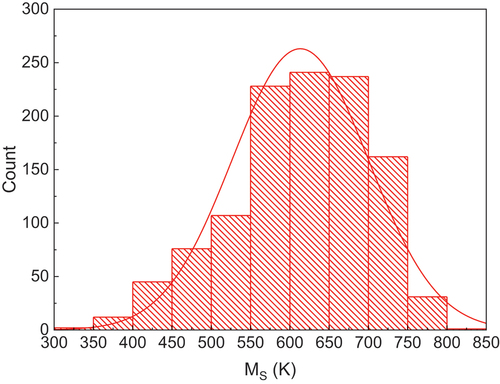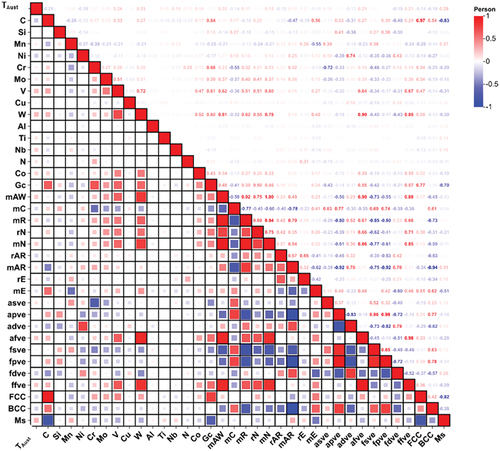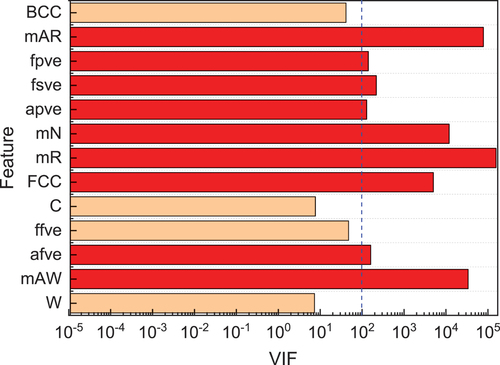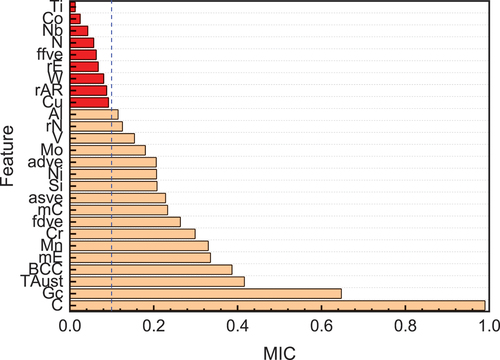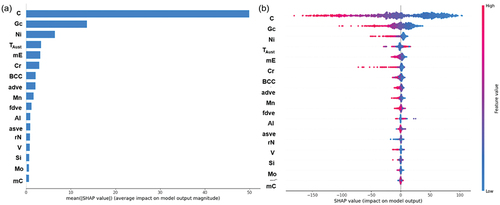Figures & data
Table 1. Empirical equation of MS calculation.
Table 2. Spatial distribution range of data set.
Table 3. Parameters used in Equationequation (2)(2)
(2) .
Table 4. Atomic feature.
Table 5. Hyperparametric adjustment.
Figure 3. Comparison of predicted and measured values of four machine learning models with original feature input (a) ETR(b) GBT(c) SVR(d) LOS.
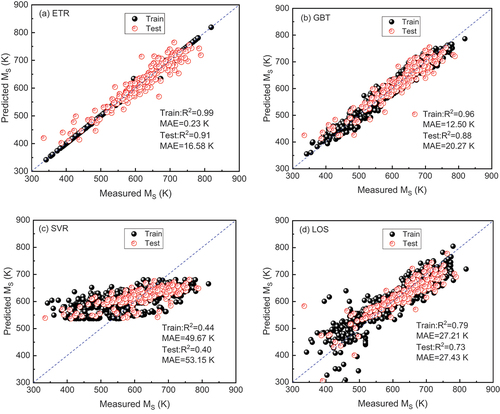
Figure 4. Comparison between the predicted value of the model and the measured value after adding atomic feature.
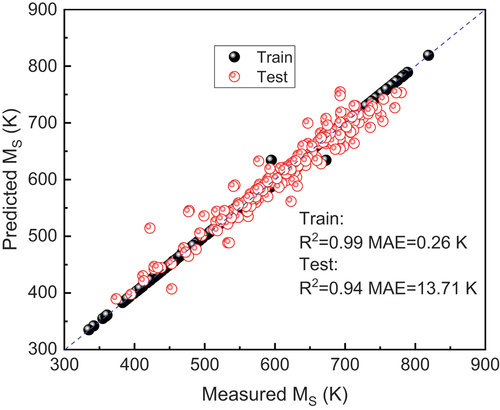
Figure 8. Comparison between predicted values and measured values of the model after feature selection.

Figure 11. Distribution of SHAP values corresponding to features (a) C (b) gc (c) Ni (d) taust (e) mE (f) Cr (g) BCC (h) adve.
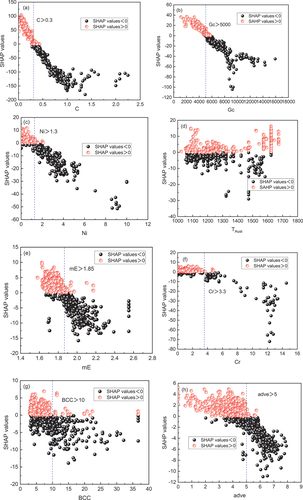
Figure 12. The difference between the calculated value and the measured value of the model and the corresponding C content and element content.
